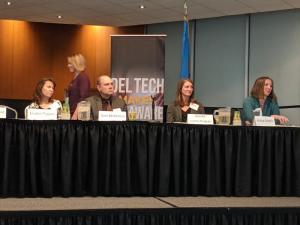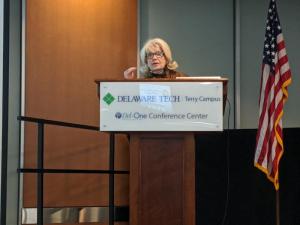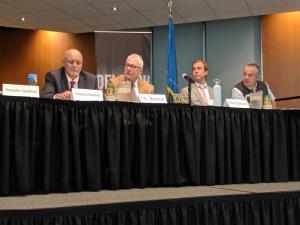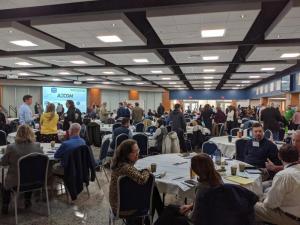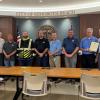From the ponds to beaches, vast bodies of water in Delaware are what always will make the state special.
“Sussex County is having breathtaking growth, and it’s all due to the water. That’s why I moved there. That’s why many move there,” said Chris Bason, executive director of the Center for the Inland Bays at the Nov. 15 sustainability summit in Dover, sponsored by RASCL, the Resilient and Sustainable Communities League.
Delaware also has the lowest mean elevation in the entire country, with an average elevation of 60 feet above sea level. This, coupled with an ever-changing climate, raises questions about the future of the peninsula.
RASCL is a collective of groups working to advance the goals of resilience and sustainability in Delaware. This year’s summit, Surf and Turf: Implications for Future Management of Our Land and Waters, focused on how Delaware can adapt to and mitigate environmental changes.
Panels focused on shifting sands and rising groundwater, both potential landscape-changing forces.
“I hear that change is really hard, but take heart,” said Constance Holland, director of State Planning Coordination and keynote speaker. “Climate change is very difficult. We have to figure out how to build our homes and businesses, and save the environment at the same time.”
According to the Department of Natural Resources and Environmental Control, 90 percent of waterways in Delaware are impaired, meaning the water contains at least one pollutant at a level that prohibits the waterway from meeting quality standards for drinking, fishing, and other recreational activities.
According to RASCL, more than 3,500 building permits were issued between 2013 and 2018. Delaware is booming, but construction is also restricting wildlife and diminishing water quality.
Preserving the natural landscape can help keep the water clean. Kristen Travers, Watershed Stewardship team leader for Delaware Nature Society, said “Forests and wetlands are like the kidneys of our landscape, filtering out toxins. This is why they’re so important.”
A panel including members of a Sussex County working group pushing for wider buffers and protecting wetlands also discussed their mission and the importance of preserving nature.
If changes are approved, buffers for tidal waters and wetlands would double to 100 feet. This increase would help stabilize the waterways, reducing polluted runoff.
I.G. Burton III, Sussex County Councilman representing District 3, said, “Sussex County has many desirable attributes that cause a lot of people to want to call this home. The natural resources of the area are certainly top of the list. We must protect our environment. We must protect our resources that provide us the quality of life that we all enjoy. This will require a different mindset when it comes to developing land.”
Another panel discussed sea level rise.
According to www.sealevelrise.org, the sea level off Delaware’s coast is four inches higher than it was in 1956. This is not necessarily due to changes within the state, but changes in the world. It’s important to understand and help work to evolve with the change.
Tom McKenna, a hydrogeologist at Delaware Geological Survey at the University of Delaware, discussed efforts to study rising sea level and the rising water table. “Groundwater flooding will happen before seawater,” McKenna said. “These floods will last weeks to months.”
McKenna and the Delaware Geological Survey are studying coastline watersheds and their characteristics to find a way to adapt. McKenna continued, “The first step is going to be educating. It comes down to the infrastructure, state, and counties. But we have to start there in order to get some type of movement in the right direction.”












